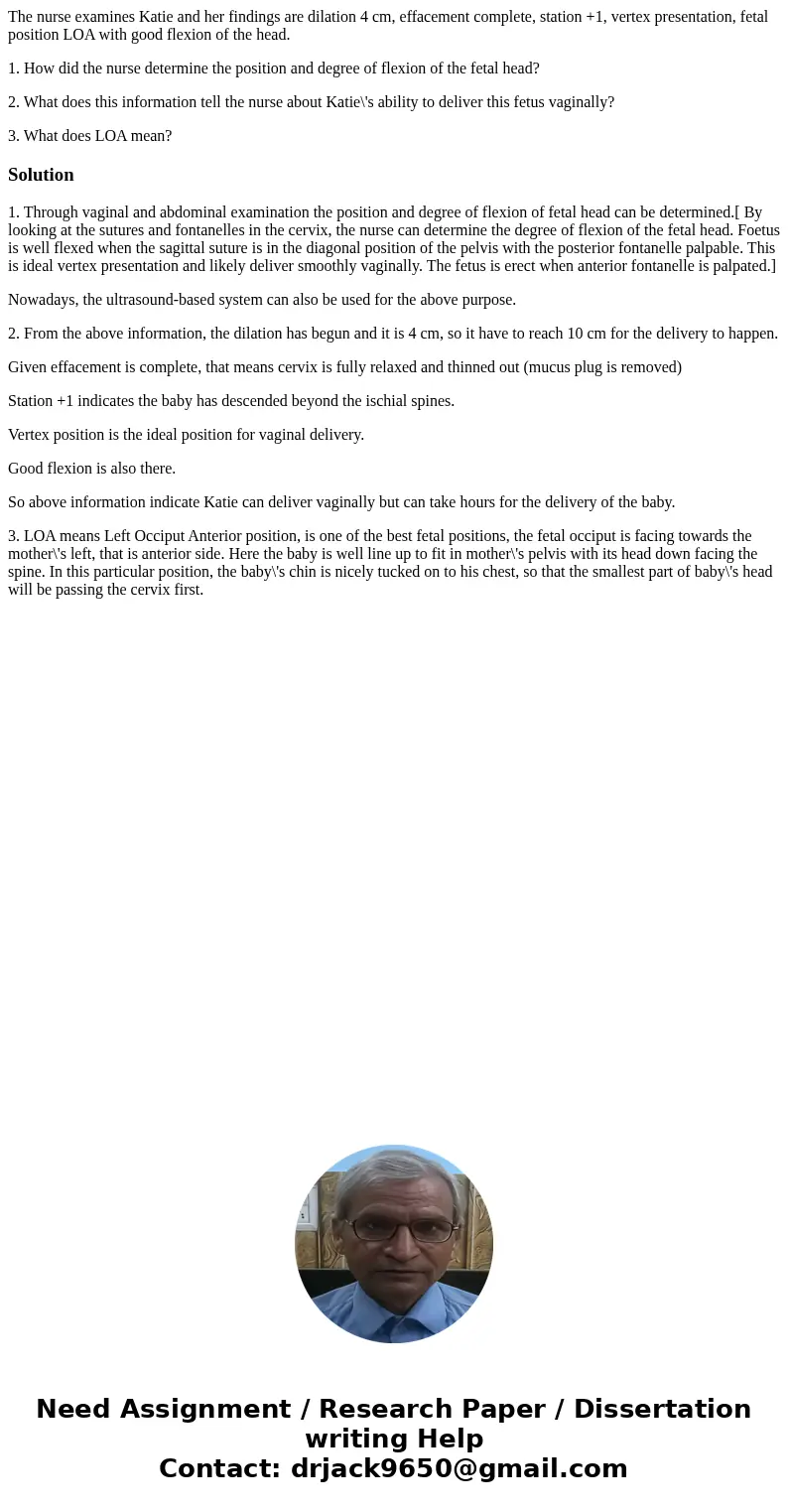The nurse examines Katie and her findings are dilation 4 cm
The nurse examines Katie and her findings are dilation 4 cm, effacement complete, station +1, vertex presentation, fetal position LOA with good flexion of the head.
1. How did the nurse determine the position and degree of flexion of the fetal head?
2. What does this information tell the nurse about Katie\'s ability to deliver this fetus vaginally?
3. What does LOA mean?
Solution
1. Through vaginal and abdominal examination the position and degree of flexion of fetal head can be determined.[ By looking at the sutures and fontanelles in the cervix, the nurse can determine the degree of flexion of the fetal head. Foetus is well flexed when the sagittal suture is in the diagonal position of the pelvis with the posterior fontanelle palpable. This is ideal vertex presentation and likely deliver smoothly vaginally. The fetus is erect when anterior fontanelle is palpated.]
Nowadays, the ultrasound-based system can also be used for the above purpose.
2. From the above information, the dilation has begun and it is 4 cm, so it have to reach 10 cm for the delivery to happen.
Given effacement is complete, that means cervix is fully relaxed and thinned out (mucus plug is removed)
Station +1 indicates the baby has descended beyond the ischial spines.
Vertex position is the ideal position for vaginal delivery.
Good flexion is also there.
So above information indicate Katie can deliver vaginally but can take hours for the delivery of the baby.
3. LOA means Left Occiput Anterior position, is one of the best fetal positions, the fetal occiput is facing towards the mother\'s left, that is anterior side. Here the baby is well line up to fit in mother\'s pelvis with its head down facing the spine. In this particular position, the baby\'s chin is nicely tucked on to his chest, so that the smallest part of baby\'s head will be passing the cervix first.

 Homework Sourse
Homework Sourse